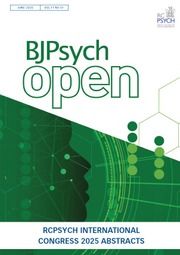Article contents
Peacekeepers deserve more mental health research and care
Published online by Cambridge University Press: 02 January 2018
Summary
United Nations peacekeeping personnel face numerous stressors due to their challenging deployments. Past studies have had inconsistent results regarding whether or not their deployment experience affects their mental health outcomes. Further studies are required to ascertain the associations between their outcomes and factors before, during and after their peacekeeping missions.
- Type
- Editorial
- Information
- Creative Commons
- This is an open access article distributed under the terms of the Creative Commons Non-Commercial, No Derivatives (CC BY-NC-ND) licence (http://creativecommons.org/licenses/by-nc-nd/4.0/).
- Copyright
- Copyright © The Royal College of Psychiatrists 2016
Footnotes
Declaration of interest
None.
References
- 3
- Cited by



eLetters
No eLetters have been published for this article.